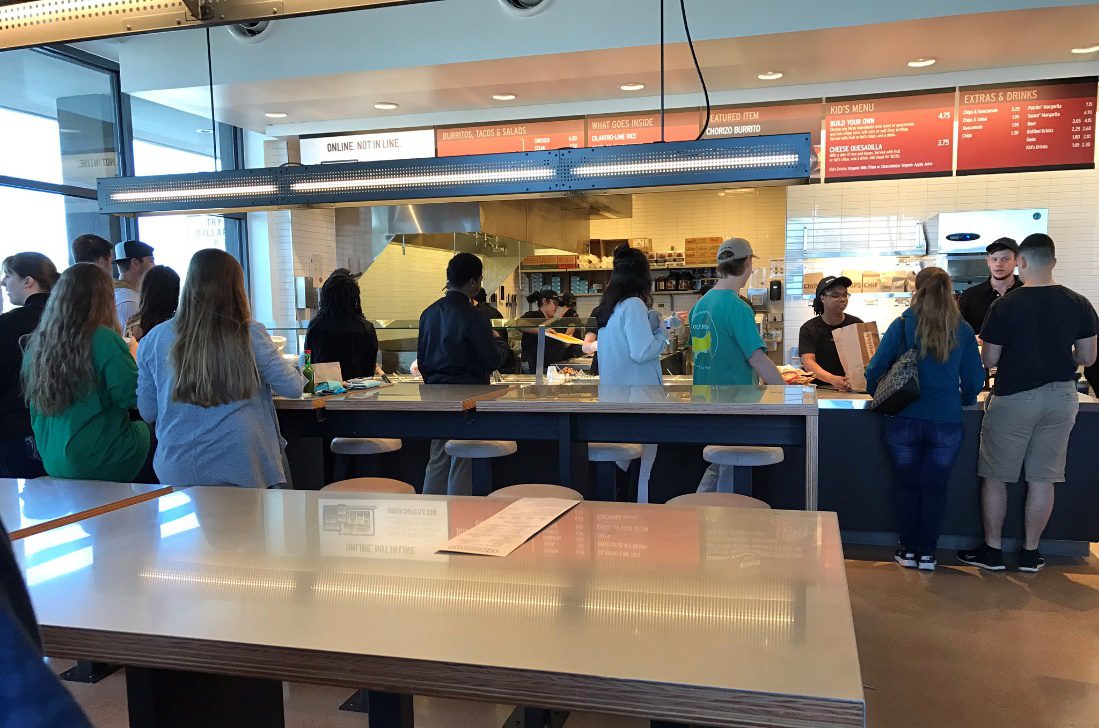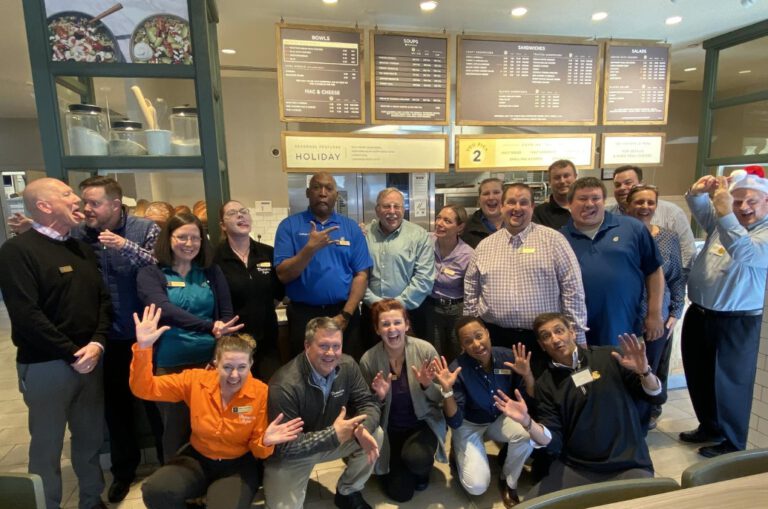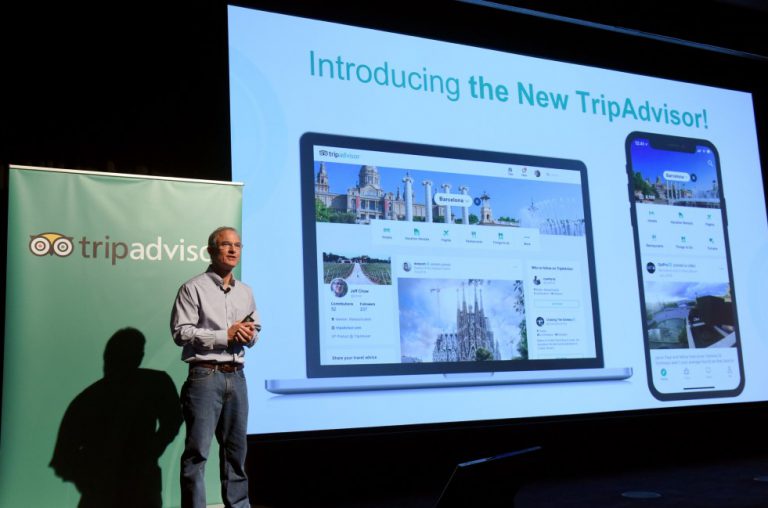The Popularity and The Decline of a non-Mexico Fast-Food Chains Chipotle
Chipotle Mexican Grill often known simply as Chipotle, is an American chain of fast casual restaurants in the United States, United Kingdom, Canada, Germany, and France, specializing in tacos and Mission burritos. Its name derives from chipotle, the Nahuatl name for a smoked and dried jalapeño chili pepper. The company trades on the New York Stock Exchange under the ticker symbol CMG.
Chipotle is one of the first chains of fast casual dining establishments. Competitors in the fast-casual Mexican market include Qdoba Mexican Grill, Moe’s Southwest Grill, Rubio’s Coastal Grill, and Baja Fresh. Chipotle has founded by Steve Ells on July 13, 1993 on the premise of making a flawless burrito out of humble ingredients cooked beautifully.
His hard work, vision and exacting standards have made the firm a national home run. Chipotle went public in January in 1993, and the stock price exactly doubled to $44 on opening day.
Afterwards, Chipotle had 16 restaurants (all in Colorado) when McDonald’s Corporation became a major investor in 1998. By the time McDonald’s fully divested itself from Chipotle in 2006, the chain had grown to over 500 locations. With more than 2,000 locations, Chipotle had a net income of $475.6 million and a staff of more than 45,000 employees in 2015.
In May 2018, Chipotle announced the relocation of their corporate headquarters to Newport Beach, California, in Southern California, ending their relationship with Denver after 25 years.
Unveiling the Success of Burrito Emperor Chipotle
#1. The Secret Ingredient Named Obsession
Steve Ells is a CEO and an entrepreneur who did not just have a good idea – he was prepared to back it with years and years of obsessive attention to detail. While much of what the company did was novel, underpinning it all was a relentless desire to perfect process. Many entrepreneurs claim to dislike process, but the really successful ones know that it is process that flips the switch between daydream and reality.
With 88 percent growth in the first three quarters of 2010, Chipotle Grill has been a huge success, and weathered the recession well, for many reasons. But one of them is because, since he served his first burrito, Ells has never once stopped obsessing about what goes into his food, how it is made, how it is served and the experience his customers find in his restaurants. He obsesses in detail – and for years – about his food, his people and his leadership to a degree that most CEOs could find daunting.

Look back to 1993, it is a time that Ells has started to have ideas about starting his own restaurant while he did not know much about the economics of restaurants – only that a lot of them went out of business quickly, or if they did not, that margins would be thin at best.
He wanted to find a way to fund his restaurant – to have a cash cow so that he would not have to worry about economics that he might deal with. Accidentally, when he was in a taqueria in the Mission District of San Francisco, an sudden idea just sort of came to him: Using the format of giant tortillas wrapped up and reinventing this traditional Mexican food to lighten it up and make it sexier by replacing popular ingredients like cilantro-lime rice, whole beans.
“I would have an emphasis on bold flavors that have nuance and depth, not just spicy but the nuance that can be achieved from traditional seasonings.” Ells said.
So, he moved to Denver, Colorado, and started the first Chipotle on July 13, 1993. It took him about a year to open the first one. He borrowed $85,000 from his dad, and the idea was that this was going to be his cash cow to support his real restaurant.
Luckily, it did well right from start: It looked, smelled and tasted different than traditional fast food. And it did not take long before there was a line out the door.
After the high praise of food critics, he decided to open the second restaurant in early 1995, and it did even better than the first one.
“We had lines out the door. And then I thought, “Wow! Maybe I want just one more.” Every time I opened one, I thought, “I am not following my true calling.” But I kept doing it. I couldn’t help it!” shared by him.
The organization got bigger and Chipotle got more attention of food lovers and aristocrats across the U.S.
Chipotle has proved that people are willing to pay a fair price for food. It is observed a growing emphasis on local, fresh, cleanly brought up food. All these labels – organic, properly reared – many of them are really unclear. But the point is that these are more sustainable models than the commodity alternatives, the mass-produced factory models based on shortcuts, which often results in exploitation and therefore are not sustainable.
#2. Socially Responsible Food Chain Following “Food With Integrity”

McDonald’s was a major investor of Chipotle from 1998 to 2006, expanding the business from 16 to 500 restaurants over that period. In 2006, Chipotle made its initial public offering (IPO), increasing its stock price exactly 100% in its first day as public company.
Revenues of Chipotle have grown at 20% CAGR from 2006 to 2014. In 2014, the company had revenues of $4,108.3 million and a net profit of $445.4 million, a margin of 10.8% of sales.
To provide a clear idea of the fantastic success of the business, it is observed the performance of its stock price. Chipotle easily outperformed the return of competitors such as Panera Bread, McDonald’s, and Yum Brands which operates KFC, Taco Bell, and Pizza Hut. It also outperformed the S&P 500 index.
Although Chipotle does not offer “real” Mexican food, it is a company that effectively connects its business and operating models to create value for its customers and stakeholders. Chipotle is a fast-casual restaurant that offers “food with integrity.” The business appeals to customers who want healthy food with a quick service. The operations of the business behind scenes clearly connect with that value proposition.
According to Euromonitor, Chipotle’s customers are young students and professionals who prefer companies that implement human practices, prepare food on-site with raw ingredients, and work with suppliers who use resources in a sustainable way4. Millennials connect better with companies that have a social-oriented mission and a value proposition that goes beyond the product they buy. This formula is behind the success of other companies such as Wholefoods.
#3. High-Quality Dining Experience Embedded in Fresh Food

Chipotle attracts health-conscious customers who want a quality dining experience. Chipotle also offers the convenience of fast food but in a cleaner, catchy environment. In fact, Chipotle initially targeted university students, who usually demand quick service and who usually hang out in a friendlier environment. This core proposition is still part of the business model of the restaurant.
This formula of fresh, tasty, and quick food delivered by a business that uses responsibly sourced ingredients is the core of the business model, which is the fascination of Millennials and health-oriented customers. The business model is efficiently delivered by a strong operating model.
#4. Sourcing from High Standards of Animal Care and Sustainable Farm Practices
The Operating Model of Chipotle perfectly connects with the value proposition of the business. Every decision in the supply chain and in the production, process connects to the two components of the business model. The Operating Model has four main components:
Chipotle carefully screens suppliers to select only those who use high standards of animal care and sustainable farming practices. It only selects from farmers who allow their pigs and cows to freely root and roam outdoors. Also, it does not serve genetically modified food. All these aspects connect with the socially responsible consumer they are looking for.
Chipotle does not use artificial flavors or fillers. Most of its meals (except the pork and beef) are prepared in the restaurant to keep food fresh. Without preservatives, the company mentions that it provides natural, healthy food.

Customers want fast service. For that reason, each meal is prepared in an assembly-line in front of the customer. To achieve that efficiency, customers choose from a simple menu. The customer must choose a base for his meal (tortilla, taco shell, burrito bowl, or salad) and top it with his choice of meat, rice, beans, salsa, and others.
#5. The Collaboration of Business Model and Operating Model
The following chart shows how the elements of the business model interact. As seen, both models align and support each other. Chipotle aims to attract health-conscious consumers that want quick service. Its operating model delivers that promise by serving fresh food in an assembly-line type production process. Its sourcing processes guarantee high-quality ingredients, which connect with company’s value proposition.
It is not a surprise that they offer non-real Mexican food. This is clearly a key element for delivering fast service and delivering the promise of naturally grown ingredients. Also, Mexican food is already well known in the country, which provides a competitive advantage among other regional restaurants.
The key short-term challenge for Chipotle is to guarantee the strength of its operational model. Overall, performance of Chipotle was been fantastic in the past years.
#6. Small Menu with Optimizing the Customer Experiences
One of the keys to Chipotle’s success is its small menu. A smaller menu has three benefits. First, since Chipotle only stocks fresh ingredients, there is always a chance of food spoilage. The small menu reduces the number of ingredients needed on-hand, thus reducing the likelihood of waste.
Second, small menus mean quick service. At other fast-food restaurants, the kitchen can get overwhelmed by the orders and can make mistakes. At Chipotle, mistakes are almost impossible: order a soft taco, choose the fillings and pay. If the employee forgets to add beans, the consumer is watching and can point out the omission. It is easy and fast, and consumers love it.

Finally, a small menu also means that customers know exactly what’s for sale each time they visit the restaurant. Chipotle does not need to develop new products or create flashy advertisements to let consumers know its offerings, and consumers are not disappointed by the disappearance of a product after a trial or promotion period.
It may be thought that small menus are bad: why would consumers want to have their choices limited? Chipotle has thought of that, and its policy is to make anything the consumer wants if the materials are available. This policy has led to the creation of the Quesarito, Chipotle Nachos and many more secret menu items.
Since Chipotle has no franchises, the company is able to maintain tight control over all aspects of its operations. Although Chipotle could grow faster with franchises, it would risk losing control over its suppliers, taste and culture.
It is not a secret that franchisees sometimes cheat by buying ingredients from a cheaper supplier or by trying to cut employment costs, making it difficult to hire excellent workers. By owning all the Chipotle stores, the company can ensure that from location to location, the design, taste and price are identical, more so than they would be if the restaurants were run by franchisees.
#7. The Separation of McDonald’s and Chipotle
In 2005, McDonald’s parted ways with Chipotle, took the $1.5 billion it had made from growing the chain, and went back to focusing on burgers and fries. Industry experts and investors have since ruled that move a huge mistake for McDonald’s and pointed out that in less than a decade, that $1.5 billion would have been worth $15 billion. However, it’s likely the business relationship had simply run its course.
Chipotle’s former communications director, Chip Arnold, described the business relationship as one with a bit of friction. “I would think of it in terms of McDonald’s being the rich uncle and Chipotle as the petulant nephew where we take the money and are grateful but are stubborn and strong-willed enough that we’re going to do what we want with it anyway,” Arnold said. McDonald’s tried to get Chipotle to install drive-thrus, develop a breakfast menu, even change the name of the restaurant.
“One of the McDonald’s guys thought we should call it “Chipotle Fresh Mexican Grill,” because the term ‘fresh’ was such a great term, and Baja Fresh had ‘fresh’ in its name,” Chipotle’s then-co-CEO, Monty Moran, said.
Steve Ells simply summed things up as the two companies having very different approaches to food and people. As for McDonald’s pulling out, McDonald’s CEO Steve Easterbrook (who was not CEO at the time) said Chipotle was basically a distraction that pulled attention away from the McDonald’s brand.
The Chipotle’s Slump in Revenue Due to E. coli Outbreak
For a long time, smug worked pretty well for Chipotle Mexican Grill. It’s grown into a chain of more than 1,900 locations, thanks in part to marketing including short animated films about the evils of industrial agriculture that reminds customers that its fresh ingredients and naturally raised meat are better than rivals’ and better for the world. The implication: If you eat Chipotle, you are doing the right thing, and maybe you are better, too. It helped the company, charging about $7 for a burrito, reach a market valuation of nearly $24 billion. Its executives seemed to have done the impossible and made a national fast-food chain feel healthy.
Fewer people associate Chipotle with “healthy”. Three months before Collins was infected with E. coli, five people fell ill eating at a Seattle-area restaurant. By the time local health officials had confirmed a link, the outbreak was over, so no one said anything. In August, 234 customers and employees contracted norovirus at a Chipotle in Simi Valley, Calif., where another worker was infected. Salmonella-tainted tomatoes at 22 outlets in Minnesota sickened 64 people in August and September; nine had to be hospitalized. Norovirus struck again in late November: More than 140 Boston College students picked up the highly contagious virus from a nearby Chipotle, including half of the men’s basketball team. An additional 16 students and three health-care staff picked it up from the victims. The source? A sick worker who was not sent home although Chipotle began offering paid sick leave in June. In the second week of December, when Chipotle should have been on highest alert, a Seattle restaurant had to be briefly shut down after a health inspection found that cooked meat on the takeout line wasn’t being kept at a high enough temperature. And in the most recent case, on Dec. 21, the CDC announced it was investigating an outbreak of what seems to be a different and rare version of E. coli that’s sickened five people in two states who ate at Chipotle in mid-November. The company says it had expected to see additional cases. It still does not know which ingredients made people ill.
At Chipotle, three different pathogens caused the five known outbreaks. That was not inevitable or coincidental. “There is a problem within the company,” says Michael Doyle, the director of the center for food safety at the University of Georgia. Chipotle has gotten big selling food that is unprocessed, free of antibiotics and GMOs, sometimes organic, sometimes local. “Blah, blah, blah,” says Doug Powell, a retired food-safety professor and the publisher of barfblog website. “They were paying attention to all that stuff, but they weren’t paying attention to microbial safety.” Whatever its provenance, if food is contaminated it can still make us sick—or even kill. Millennials may discriminate when they eat, but bacteria are agnostic.
“Food with integrity,” a promise to Chipotle’s customers and a rebuke to its competitors, has become the source of much schadenfreude among both. Chipotle’s stock has lost about 30 percent of its value since August. Sales at established stores dropped 16 percent in November, and executives expect a decline of 8 percent to 11 percent in comparable-store sales for the last three months of the year. That would be the first quarterly decline for Chipotle as a public company.

Chipotle has said it will shift more food preparation out of restaurants and into centralized kitchens that is, it will do things more like the fast-food chains it is long mocked. Ells’s company has always urged customers to think about its supply chain.
Chipotle is not giving any estimates for 2016 at all, except to say that 220 to 235 restaurant openings will proceed.
Chipotle was already experiencing slower growth in established stores. Comparable-store sales rose 16.8 percent in 2014; during the first nine months of 2015, that figure was 5.5 percent. Hartung says there have been surges and slowdowns before. “Nothing signaled to us that we were at a peak,” he says. “We were just taking a pause.” Yet it is natural for a company that is been around for two decades to shift to more modest growth.
It is worth noting that, contaminated food aside, Chipotle is on the right side of fresh food trends, while its more old-school rival’s stumble. But the company’s pause could be extended. Mark Crumpacker, the chief creative and development officer, says Chipotle has seen a drop-off among its least frequent customers and its most frequent. “That’s more worrying,” he says. Chipotle may have lost some customers altogether. “A small percentage may never come back, or it may take years.”









